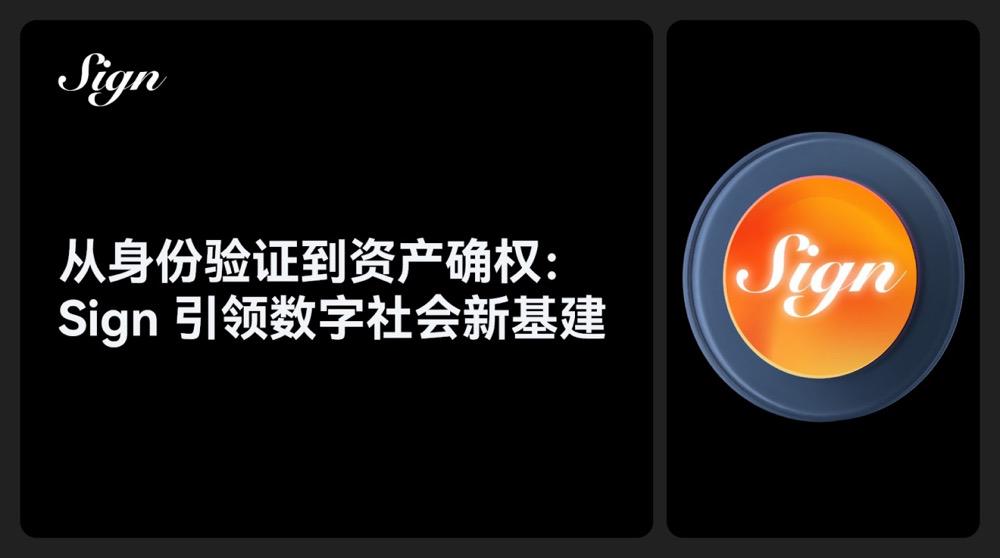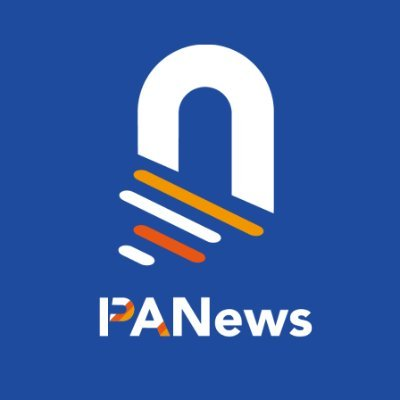From identity verification to asset confirmation: Sign is leading the way in the new infrastructure of the digital society

With the acceleration of the digital wave, the way the world operates is being redefined almost daily. So, how to establish a set of global standards between the identity systems, asset allocation and regulatory rules that operate independently within each sovereign state, so as to break through the fragmentation of data silos, inconsistent standards, and high compliance costs, which have become a "glass ceiling" for global collaboration?
To break this ceiling, what we need is a foundation of trust that can be accepted by sovereigns, multinational corporations, and even the pure Web3 community. That's exactly what Sign does:
Sovereign-level identity: Through the Sign Protocol, official documents such as passports and visas can be securely uploaded to the chain, helping governments unleash the potential of digital government within a compliance framework.
TokenTable standard: Modularize and template the complex token issuance, unlocking, and distribution processes, allowing enterprises and project parties to issue tokens like calling APIs, while ensuring regulatory traceability.
In short, Sign hopes to bring "requirements scenarios that need to be easily verifiable on a global scale" to the blockchain through a unified standard, from identity verification to asset confirmation, so that individuals, businesses, and governments can enjoy the convenience of global collaboration.
Project Overview: What Problem Does Sign Solve?
Project Overview
SIGN is currently participating in the construction of a number of national digital infrastructures, and its products have been deployed in the United Arab Emirates, Thailand and Sierra Leone, and plans to cover more than 20 countries and regions, including Barbados, Singapore and other emerging digital government practice highlands.
In terms of product indicators, the number of Sign Protocol voucher templates has increased by orders of magnitude, with the cumulative total distribution of the TokenTable platform exceeding US$4 billion, covering more than 40 million on-chain wallet addresses, and more than 200 actual service projects, covering multiple mainstream ecosystems including Starknet, ZetaChain, and Notcoin.
The recognition of the capital market is gradually being realized. Sequoia Capital participated in cross-regional investments, and YZi Labs also led the subsequent rounds, and the Sign project has achieved an annual revenue of $15 million, becoming one of the few participants in the identity and token infrastructure track with real revenue models, showing strong market competitiveness and development potential.
Project Vision
At a time when global collaboration is constantly evolving, Sign proposes the concept of "super-sovereign database", trying to create a verifiable and auditable information structure system on a global scale through blockchain technology, promoting the comprehensive integration of on-chain governance, on-chain economy and on-chain identity, and becoming the underlying engine of global digital collaboration.
Core positioning
Sign's core architecture is focused on two key modules: authentication infrastructure and asset distribution infrastructure. Based on this, Sign is building a standardized, programmable, and cross-chain deployable trust layer protocol. This protocol satisfies the basic needs of Web3 and has a highly real-world compatible identity and distribution system to ensure trust and value delivery on a global scale.
Technology Deconstruction: Sign's underlying architecture and product matrix
Based on Sign Protocol and its derivatives (TokenTable, SignPass, and EthSign), Sign connects the three engines of identity, service, and assets on the chain, leading the construction of the next generation of digital society infrastructure.
Sign Protocol: The authentication protocol available on the whole chain
Sign Protocol is highly scalable and flexible to deploy. The system supports multi-chain deployment, and can be deployed locally on the sovereign chain according to regulatory compliance needs, and at the same time, with the help of Arweave to achieve off-chain redundant backup of data to ensure the security and durability of data. The index layer is managed by SignScan in a unified manner, which supports standardized query and verification of on-chain credentials, greatly improving the convenience and efficiency of operations.
The protocol supports local contract interaction mechanisms and remote deployment architectures, and can access multiple identity sources in Web2 and Web3. By employing asymmetric encryption and zero-knowledge proof mechanisms, Sign provides strong authentication capabilities while ensuring the complete protection of user privacy, allowing users to enjoy convenient services without worrying about personal information leakage.
TokenTable: a digital asset distribution engine
TokenTable is currently the most comprehensive digital asset distribution engine in the industry. The Unlocker module provides a fully on-chain trusted token unlocking scheme, which is suitable for complex unlocking logic such as linear release and event triggering. The Merkle distributor has a hybrid design that saves gas costs while retaining the flexibility of the distribution logic. The signature distributor focuses on centralized and efficient distribution scenarios, and adapts to the needs of activities that require social interaction and complex behavior incentives.
SignPass: An on-chain identity system
SignPass is a highly configurable on-chain identity system for governments and organizations, which can strongly support its efficient application in many scenarios such as digital government, resource allocation, and user authentication. Through SignPass, user identities can be easily reused between different protocols and platforms, becoming an authoritative credential to participate in on-chain governance and various activities, greatly improving the convenience and sense of identity of users in the digital world.
EthSign: The first application for on-chain signing
As an early product of the Sign ecosystem, EthSign has evolved to become a representative application for on-chain e-signing. All contract signing records are permanently stored on the chain, which ensures that the contract content cannot be tampered with at the legal and technical levels, and provides a solid and reliable foundation for on-chain business activities. Whether it's a business-to-business collaboration or an individual-to-institution transaction, EthSign ensures a secure, transparent, and trusted sign-up process.
Economic model: SIGN token information
As a token based on the ERC-20 standard, SIGN is the core incentive mechanism and functional token of the Sign protocol. The current maximum supply is set at 10 billion, and the initial circulation ratio is 12%, of which the tradable portion is about 8.5%. This mechanism not only ensures the stability of the initial market, but also leaves sufficient space for long-term governance incentives and provides a solid foundation for ecological construction.
The role of the SIGN token permeates all levels of ecological use. At the protocol usage and deployment level, SIGN is used as computing resource fuel. In the community dimension, the token has the ability of collateral and governance, and can participate in product parameter setting and protocol evolution proposals. In addition, SIGN also carries the value consensus function, providing a channel for holders to participate in the long-term direction decision-making of the ecosystem.
Capital & Community: From "Top Investment" to "Cultural Consensus"
Since its inception, the Sign project has successfully secured $32 million in financing due to its exceptional innovation and great growth potential. In the early stage, Sequoia Capital co-invested across the Americas and Asia, providing strong financial support for the start-up and development of the project.
In subsequent rounds, YZi Labs led the support and further promoted the expansion and upgrade of the project. This capital structure not only covers the world's major markets, but also fully reflects Sign's global potential in terms of industry awareness, compliance layout and business implementation, laying a solid foundation for its future growth.
The Sign ecosystem has built a culturally identifiable global builder community around the Orange Dynasty. In terms of on-chain governance, SignPass, as an on-chain identity carrier, has been introduced into the DAO participation system, enabling community members to participate in proposals and voting decisions with identity credentials, forming an on-chain identity social network with signing, socializing, verification and distribution as the core interactive structure. This mechanism is driving a new form of "user-protocol-asset" on-chain relationship.
Future Prospects: From "Protocol" to "Digital Civilization"
Sign plans to embark on a series of strategic product iterations in 2025. Sign will promote government-level deployment in more countries, promote the wide application of blockchain technology in the scenario of sovereign institutions, and further enhance its influence in the field of government affairs.
In the second half of the year, Sign plans to focus on the integration of the mobile ecosystem, aiming to open up the identity, task and distribution modules, build a convenient user participation and liquidity portal, and attract more users to join the Sign ecosystem. At the end of the year, Sign Media Network will be officially launched, marking Sign's successful transformation from a base protocol to a content delivery network, extending its capabilities in the field of data sovereignty and on-chain publishing, and providing new platforms and opportunities for the creation and distribution of digital content.
Medium- and long-term strategy
In the medium term, Sign will launch the Sovereign Layer2 solution as a customized rollup service form for the government. Through the deep integration of on-chain identity and token system, Sign is depicting the prototype vision of the "on-chain nation". At the same time, the "Sign Stack" public utility stack will continue to be launched to provide developers with standardized call interfaces and development environments, and promote the further maturity of the Web3 application ecosystem.
Building a foundation of trust: Sign is ushering in a new era of digital civility
Sign isn't just a technology agreement or a single platform, it's about building a future-proof system of trust and collaboration. At a critical stage when identity compliance has become a global consensus, its infrastructure capabilities are becoming a key support for the digital society.
With its cross-chain compatible architecture, privacy-preserving technology, and real-world cases, Sign shows how Web3 can move out of the circle and into a feasible path to national application scenarios. A more credible, transparent, and verifiable digital civilization may be the beginning of this. Sign will play an integral role in this transformation, leading us to a future of opportunity and possibility.
